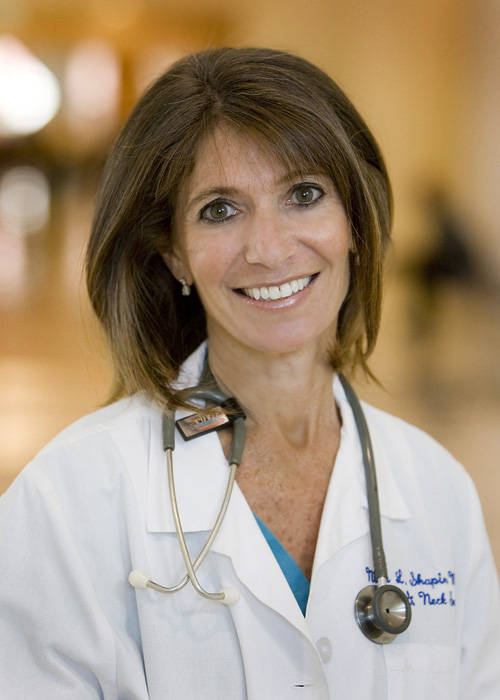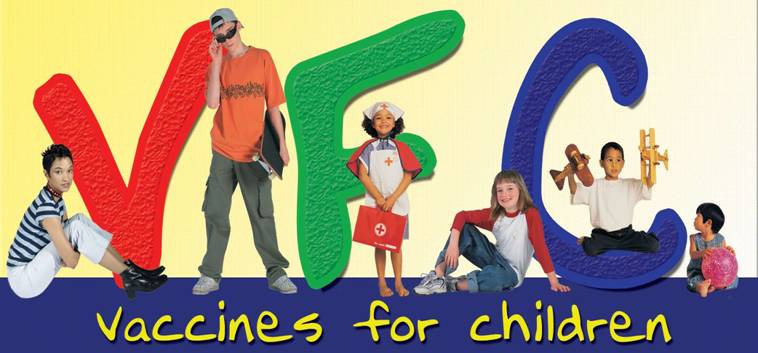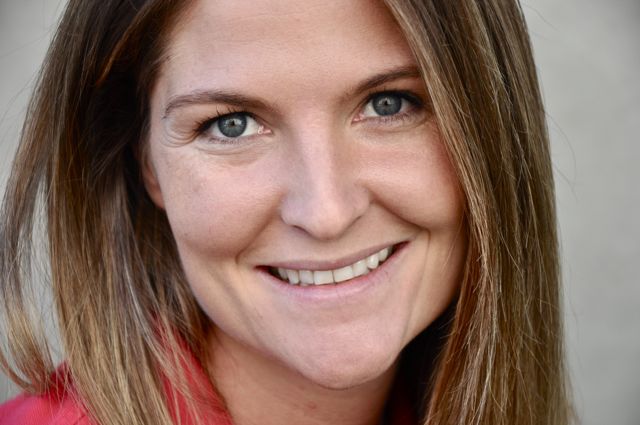Host Gil Gross, an award winning radio journalist who has reported the news to millions of Americans and interviewed pop culture icons and heads-of-state alike turned to AJGpr client Dr. Nina Shapiro after reading her Op-Ed in the Los Angeles Times — With fewer vaccinations, is your child’s school safe? Too many parents are seeking excemptions from California’s vaccination law.
This story has legs…
Data shows the anti-vaccination movement spreading to places like Malibu and Boulder — so Salon’s political reporter, Alex Seitz-Wald sought out AJGpr client, Dr. Nina Shapiro for some answers. Here is his article that appeared in Salon.com on Wednesday, August 13. 2013.
You may not immediately peg the woman in yoga pants sipping Kombucha outside Whole Foods as a science-denier, but she might be. The anti-vaccination movement, which posits — in the face of overwhelming empirical research — that vaccines cause autism and other diseases, seems to be picking up steam in many of the country’s wealthier, educated enclaves where parents are interested in living “natural” lifestyles.
“It’s a little bit cool, it’s a little bit of a trend,” says Nina Shapiro, a professor at UCLA medical school and mother of two who wrote an Op-Ed in the Los Angeles Times this weekend about her growing concern with the anti-vax movement.
It’s certainly true of the anti-vaccination’s most prominent voices, like actress Jenny McCarthy, who was just hired to a spot on “The View,” and environmentalist Robert Kennedy Jr.
“It’s that whole natural, BPA-free, hybrid car community that says ‘we’re not going to put chemicals in our children,’” Shapiro told Salon. “It’s that same idea: ‘I’m going to be pure and I want to keep my child pure.’”
California law mandates that all students get vaccinated, but it also makes it easy to get exemptions for personal beliefs. And parents in tony places like Marin County are taking advantage of it in seemingly growing numbers. One public elementary school in Malibu, an affluent beach town just north of Los Angeles, reported that only 58 percent of their students are immunized — well below the recommended 90-plus percent level — according to Shapiro.
And it’s even worse in some of L.A.’s private schools, where as few as 20 percent of kids are vaccinated in some schools. “Yes, that’s right: Parents are willingly paying up to $25,000 a year to schools at which fewer than 1 in 5 kindergartners has been immunized against the pathogens causing such life-threatening illnesses as measles, polio, meningitis and pertussis (more commonly known as whooping cough),” she wrote.
Shapiro’s Op-Ed provoked such heated discussion among the Times’ readers that the Southern California paper devoted a second item just to the reaction.
Joel Stein wrote in Time magazine a few years ago about his disagreement with his wife over vaccinating their children — he wanted to, she didn’t. Her view was “not unique,” he wrote, “at least not in the liberal, wealthy part of L.A. where we live.”
But it’s not just California. Public health officials see large clusters of unvaccinated children in latte-drinking enclaves everywhere, like Ashland, Ore., and Boulder, Colo., where close to 30 percent of children are exempted from one vaccine or another. In some schools in Ashland two-thirds of the students have exemptions, according to Mark Largent, a James Madison College professor who wrote a book about the vaccine debate last year.
And new data out this month from the Centers for Disease Control shows what Paul Offit, a pediatrician at Children’s Hospital of Philadelphia, calls a disturbing uptick in the number of children forgoing vaccinations. “For the first time ever, there are a handful of states which now have people who are choosing not to get vaccines at the greater than 5 percent level, which is a problem. That’s where you’re going to start to see some of these diseases coming back. And you’re already seeing it with whooping cough and other diseases,” he told Salon. Indeed, the anti-vaccination movement was blamed for helping cause the worst whooping cough epidemic in 70 years.
The states above 5 percent include Michigan, Vermont, Idaho and Oregon. Illinois barely missed the cut at 4.8 percent. The national median is 1.8 percent, with many states below 1 percent, making Vermont (5.7 percent) and Oregon (6.4 percent) more than three times above the national average.
Offit, a prominent skeptic of alternative medicine and pro-vaccination author, explained that high education levels can enhance, rather than deter, anti-vax beliefs. “They’re people who believe that they can know anything and know as much as their doctor — if not more — by simply studying it, reading about it,” he said. Many of these people, he added, are used to being in control of their lives and at their jobs and want to control this aspect of their lives as well.
Science writer Chris Mooney has written that vaccine denialism “largely occupies the political left,” though he later walked that back in light of polling data and pushback from Kevin Drum, David Frum, Andrew Sullivan and others, who pointed out that shopping at Whole Foods does not necessarily make you a liberal. And in Congress, the anti-vax movement is represented by Republicans.
And there’s some evidence to suggest that vaccine denialism is gaining strength on the far-out libertarian fringe of the right, where people like Michele Bachmann, Alex Jones and others have spoken out against what they see as a totalitarian mandate from the government to inoculate your children. That might help explain the presence of Idaho on the CDC list, and the fact that the data show the largest increases in non-medical exemptions came from Georgia and West Virginia.
Money can’t buy you love, but a new study suggests lovemaking can earn you money – and not just if you’re employed in the red light district.
MarketWatch reporter Quentin Fottrell and AJGpr client, couples psychotherapist Dr. Fran Walfish join anchor WSJ News Editor, Wendy Bounds on the Wall Street Journal Digital Network live lifestyle show “Lunch Break” to discuss his story about new research on the relationship between sex and money.
Dr. Fran Walfish is the author of The Self-Aware Parent (Palgrave Macmillan).
With fewer vaccinations, is your child’s school safe?Too many parents are seeking exemption from California’s vaccination law.
Across the country, preschools and elementary schools are declaring themselves nut free or peanut free, asking families not to pack lunch foods that could pose life-threatening dangers to highly allergic children. And the prohibitions are expanding beyond nuts. Some schools, for example, have prohibited powdered cheese products to protect children who are especially dairy sensitive.
These measures may be excessive, but as a physician, I understand the desire to protect students. Children with serious allergies really can have severe reactions to trigger foods, so it’s not that surprising that some schools have reacted aggressively.
But the great bulk of children face a far greater risk of harm from disease. If the goal is really to protect children, I’d like to see all schools declared “unvaccinated-free zones.”
The law in California mandates that students in public and private schools be immunized, but it also allows easy-to-get exemptions for personal beliefs.
Although some 90% of the state’s kindergartners are up to date on their immunizations, it is not uncommon for individual public elementary schools to report that more than one-third of their kindergartners are not.
And if you’re thinking this must be a problem unique to schools in low-income neighborhoods, think again. One of Malibu’s three elementary schools reported that just 58% of its kindergartners were up to date on their vaccinations, and some other affluent areas throughout the state have schools with similar compliance rates.
Private schools vary widely, but some have rates of less than 20%. Yes, that’s right: Parents are willingly paying up to $25,000 a year to schools at which fewer than 1 in 5 kindergartners has been immunized against the pathogens causing such life-threatening illnesses as measles, polio,meningitis and pertussis (more commonly known as whooping cough). In order for a school to be considered truly immunized, from a public health standpoint, its immunization rate needs to be 90% or higher.
Parents have varied reasons for choosing not to immunize their children. Some are concerned that vaccinations raise the risk of autism, although study after study has debunked this myth. Others, concerned that small bodies can’t tolerate so many vaccines at once, have decided to spread out the schedule recommended by the American Academy of Pediatrics and the Centers for Disease Control and Prevention, though there is little evidence to support this practice. Some parents think that because some of the illnesses for which kids get immunized are extremely rare these days, there’s little reason to vaccinate.
But here’s the reality: These diseases do exist, and we’re already seeing some of them make a comeback.
When I was in medical school, pertussis was discussed primarily in the past tense. We learned about how whooping cough had taken the lives of many people in the 1930s, before a vaccine was available. It felt like ancient history. But now, pertussis has made a comeback in California and other states, causing severe illness in kids and adults. Children have died.
There is also a vaccine now to protect against Haemophilus influenzae type b, a bacterial disease that can cause severe respiratory illnesses, meningitis, eye infections, blocked breathing and even death. In the years after the vaccine was licensed in 1985, the disease was nearly eradicated, but now it’s back too.
Dr. Jonas Salk, creator of the polio vaccine, spoke at my medical school graduation. Polio killed millions and paralyzed millions more, but thanks to Salk and Albert Sabin, whose vaccine came soon after Salk’s, we haven’t seen outbreaks in the U.S. since the 1950s.
It used to seem a sure bet that polio was gone for good in the United States and would soon be eradicated everywhere. In 2012, just 223 cases of polio were reported worldwide, all but six of them in the three countries where the disease remains endemic: Afghanistan, Pakistan and Nigeria. One barrier to complete eradication has been suspicion toward the vaccine in remote areas of those countries. It’s ironic that vaccine suspicion is now growing here as well.
It still seems likely we’ll win the war against polio. But it’s no longer looking all that certain with whooping cough, meningitis and measles, to name a few. They could be coming soon to a school near you.
Check vaccination rates at your child’s school.
Sasha Emmons of Parenting.com examines the question of media violence and it’s effect of kids today.
She opens her article stating, “With every school shooting, like December’s horrific massacre in Newtown, questions about guns in media and their connection to real-life violence bubble to the surface again. After all, there have been reports that Sandy Hook shooter Adam Lanza was a fan of the ultra-bloody Call of Duty video game series.”
To read the full story click here.
For expert insight into this question, Sasha turned to my client, Dr. Gwenn O’Keeffe, pediatrician, parenting and digital media expert, and CEO of Pediatrics Now. Dr. Gwenn is the author of Cybersafe: Protecting and empowering Kids in the Digital World of Texting, Gaming, and Social Media.
Greg Milam of Sky.com, recently interviewed AJGpr client, talent manager Susie Mains and author of the upcoming book Baby You’re A Star about Lindsay Lohan and her most recent brush with the law. Below is the transcript. Click on the link to view the video
Troubled star Lindsay Lohan goes on trial in a case that represents her most serious brush with the law in six years of scandal.
The 26-year-old is accused of lying to police when she told them she was not behind the wheel of a Porsche that collided with a truck as she headed to filming of the movie Liz & Dick in June.
If she is found guilty, Lohan could also be in breach of her probation for a conviction for shoplifting from a jeweller’s shop in the Californian beach resort of Venice.
The former child star has repeatedly been in trouble with the law since she was arrested for driving under the influence in 2007.
A catalogue of arrests, court appearances and rehab has become fodder for America’s huge entertainment news industry.
Mike Walters, news director of TMZ.com, told Sky News that this is the most serious case she has ever faced.
“She is not going to get a slap on the wrist and sent to jail for a couple of days. She is going to be there for a long time,” he said.
He accepts the media has played a part in her troubles – but that can be no excuse for her.
“When Lindsay Lohan first got in trouble I would say the way it was covered could have caused some of her problems,” he said.
“But at a point you’ve got to say ‘Take some responsibility’. She is an adult, she has been famous for a number of years, you can’t blame the media, her parents, her upbringing, the movies she was on, her ex-boyfriends, after all this time.”
Her life has become a cautionary tale for those who spot child stars and guide them through the minefield of Hollywood and fame.
Susie Mains, a child talent agent and author of Baby, You’re A Star, told Sky News: “Lindsay Lohan was wanted by producers and directors, and now she’s wanted by the law.
“The greatest tragedy is that she is so uber-talented, unbelievably, off-the-charts talented, and made the difficult transition from child star to meaningful movie star, but couldn’t sustain it.”
Lohan faces misdemeanour charges of reckless driving, giving false information to a police officer and resisting, obstructing or delaying an officer in relation to the crash in Santa Monica. Each carries a potential jail sentence of three months to a year.
It has been reported she rejected the offer of a plea deal offered by prosecutors which had proposed she spent 90 days in a locked rehabilitation facility.
Her lawyer, Mark Heller, told the last court hearing that Lohan was currently in therapy.
He said: “This is not what she needs – rehab. Lindsay doesn’t have a problem with alcohol and drugs. Lindsay’s issues are different.”
Judge James Dabney dismissed his calls for a delay, saying: “I don’t know how the next two weeks is suddenly going to change the history of these cases.
AJGpr client, Emma Jenner, a child development and child behavioral specialist, best known for her role as host of TLC’s “Take Home Nanny” ha posted Part 2 of her book picks for kids on the Huffington Post. Here is the link for Nanny Emma’s Picks: The Best Books for Kids, Part II (ages 6-10).
Emma will have a parenting book out on Atria/Simon & Schuster in 2014.
My client, Emma Jenner, a child development and child behavioral specialist, best known for her role as host of TLC’s “Take Home Nanny” is now blogging on the parenting pages of The Huffington Post. In her most recent post she details her book picks for kids aged 1 to 6.
Emma will have a parenting book out on Atria/Simon & Schuster in 2014.

Infant and Toddler Winter Illnesses
Why do newborns sound so congested? When should you worry about an infant’s cough? Are steroids really needed for a wheezy one year old? Does croup or bronchitis mean a child is more likely to develop asthma? Why do some toddlers have so many ear infections?
Nothing is more distressing to a parent than a young child’s illness. It may feel like one cold is hardly over before the next virus hits, and a cough or runny nose may seem like a chronic occurrence.
On Monday, February 18, 2013 at 12:00 pm EST, Dr. Nina Shapiro, Director of Pediatric Ear, Nose & Throat at UCLA School of Medicine, and the author of Take A Deep Breath: Clear the Air for the Health of Your Child., will explore the common respiratory illnesses encountered during a child’s early years, including colds, sinusitis, ear infection, strep throat, tonsillitis, flu, RSV, pertussis, croup, bronchitis and pneumonia.
She will review the symptoms of these common illnesses with a focus on treatments to manage the symptoms at home and when to worry or call the doctor. Young children typically encounter 5 to 10 colds or viral illnesses a year. The practical information shared by Dr. Shapiro in this webinar will come in handy for parents and caregivers of children from infancy through preschool.
Registration to this free expert speaker webinar is available to all interested parents and caregivers. You may distribute the registration link via email or social media.












